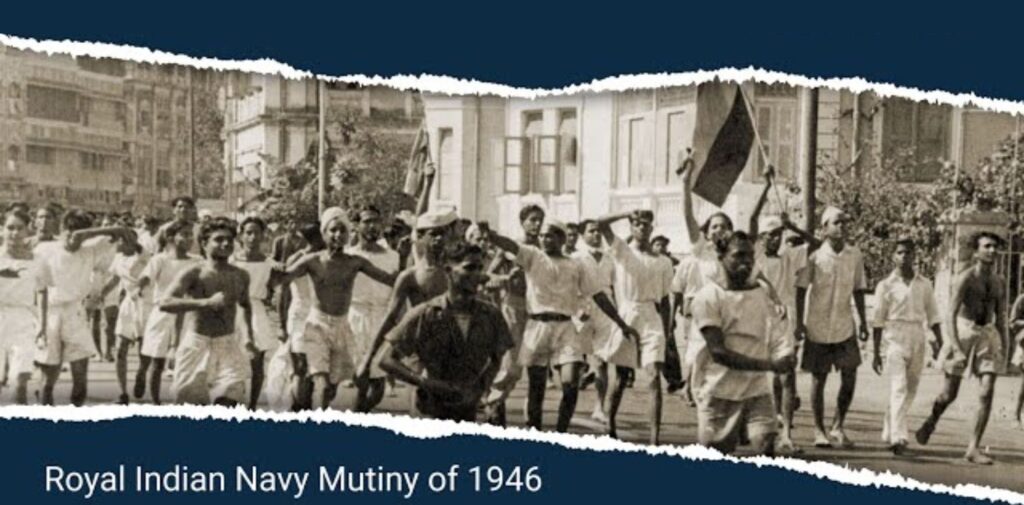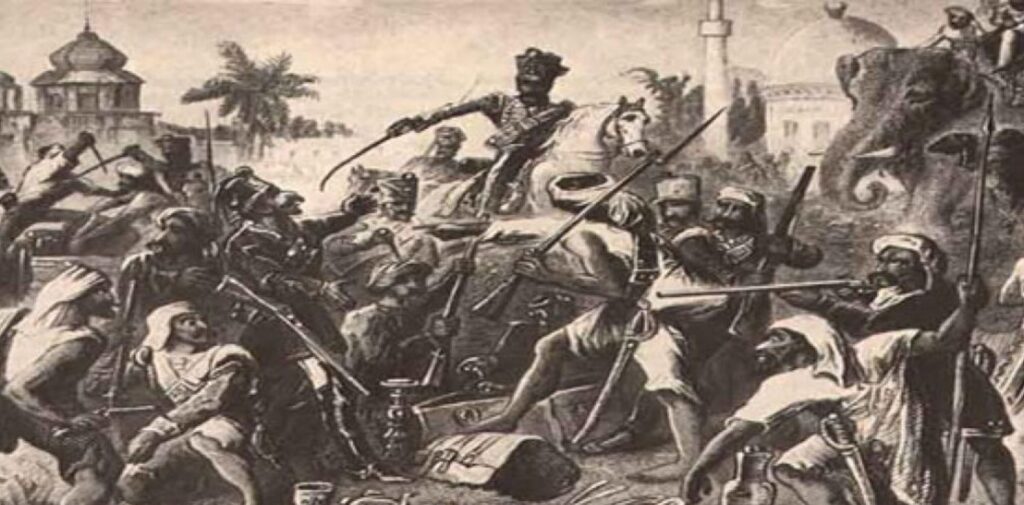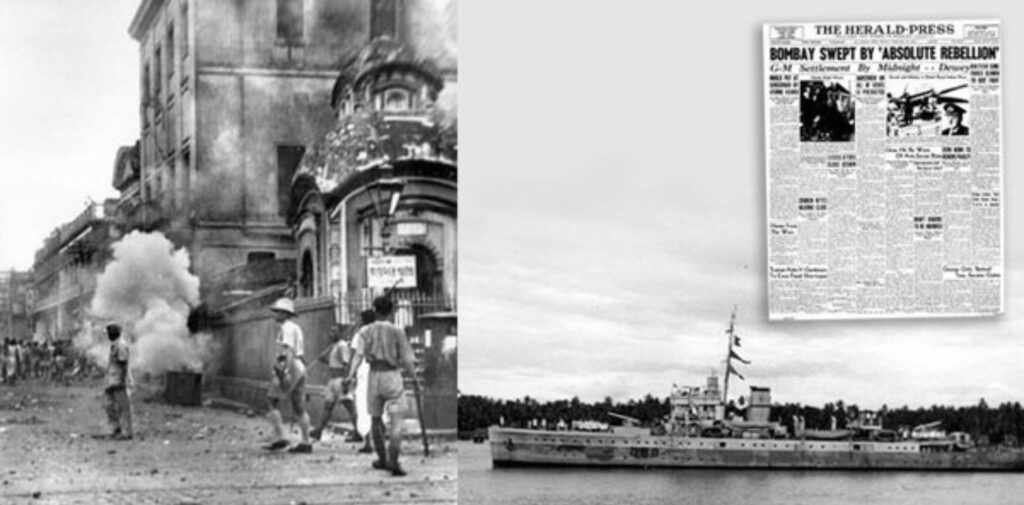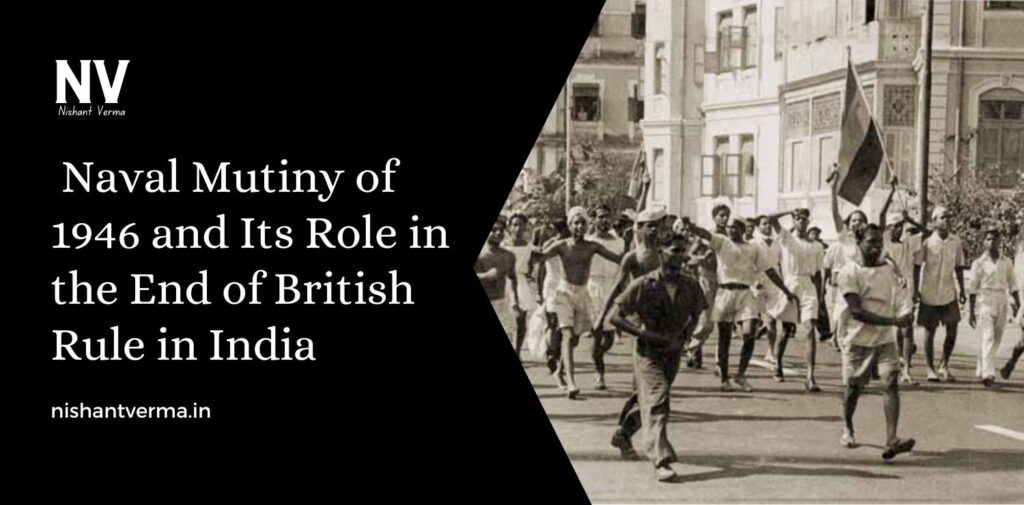India’s fight for independence from British rule was a long and challenging journey. There were many important events, movements, and revolts that played a key role in the eventual end of British colonial rule. One such important event was the Naval Mutiny of 1946. This mutiny, which was a revolt by Indian sailors in the British Indian Navy, had a huge impact on India’s struggle for freedom. It not only shook the British government but also brought the end of British rule in India closer.
In this article, we will learn about the Naval Mutiny of 1946, what led to it, and how it played a role in the independence of India.
What Was the Naval Mutiny of 1946?
The Naval Mutiny of 1946, also known as the Royal Indian Navy Mutiny, was a rebellion by Indian sailors and workers against the British rulers. It took place in February 1946 and was one of the most significant uprisings in India’s struggle for independence.
The sailors who took part in the mutiny were mostly Indian, but they worked under the British command in the Royal Indian Navy. These sailors, who were from different parts of India, were not happy with the British rule and their poor treatment. They were overworked, underpaid, and often mistreated. The sailors decided they could no longer accept these conditions and decided to revolt.
The mutiny started in Bombay (now Mumbai), where sailors aboard several British ships refused to follow orders. They protested against their poor living conditions, low pay, and racial discrimination. The mutiny spread quickly to other parts of India, including Karachi, Chennai, Calcutta, and other naval bases.

What Caused the Naval Mutiny?
The mutiny did not happen suddenly. It was the result of many years of anger and frustration among the sailors. There were several reasons why the Indian sailors decided to revolt against the British.
- Poor Living Conditions: The sailors were treated poorly by the British. They were forced to live in cramped and unhygienic conditions. They were given very little food, and their living spaces were overcrowded. These conditions made the sailors unhappy and frustrated.
- Low Pay and Unequal Treatment: Indian sailors were paid much less than their British counterparts, even though they did the same work. This was a clear example of racial discrimination. The sailors felt that they were being treated unfairly because of their race and nationality.
- Support for Indian Independence: The sailors who participated in the mutiny were inspired by the ongoing struggle for Indian independence. They knew that the country’s freedom movement was gaining momentum, and they wanted to play their part in it. Many of them had heard about other protests and movements like the Quit India Movement (1942) and were determined to help India gain independence from British rule.
- Injustice and Oppression: The sailors felt that they were being treated as second-class citizens. The British officers gave them harsh punishments for even small mistakes, and this constant oppression led the sailors to join together and revolt.
How Did the Mutiny Begin?
The revolt began in Bombay (Mumbai), where sailors aboard several ships started a strike on February 18, 1946. The sailors refused to obey the British officers, and they raised slogans demanding better conditions and treatment. They also called for the release of political prisoners who had been fighting for Indian independence.
As the mutiny grew, more and more sailors joined the protest, and it soon spread to other naval bases across India, including Karachi, Chennai, and Calcutta. The sailors’ actions inspired many other people to join the movement, including workers, students, and even common citizens.
The British government tried to suppress the mutiny by using force. However, the mutineers were determined, and the protests continued for several weeks. The British faced difficulties in controlling the situation, and it became clear that the British Empire’s control over India was weakening.

The Role of the Mutiny in India’s Independence Movement
Although the mutiny was not successful in achieving immediate goals, it played an important role in India’s struggle for independence. Here’s how:
- Weakening British Control: The Naval Mutiny showed the British that they no longer had full control over India. The mutiny involved not only the sailors but also many workers and common people. The British were unable to stop the protests, and this demonstrated that the Indian people were united in their fight for independence.
- Increased Pressure on the British Government: The mutiny added pressure on the British government. The British realized that they could not continue to rule India in the same way. The mutiny made them realize that they needed to make some changes if they wanted to avoid more widespread uprisings in the future.
- Strengthening the Independence Movement: The mutiny gave a huge boost to India’s independence movement. It showed that people from different sections of society—soldiers, workers, and civilians—were willing to fight together for India’s freedom. The mutiny also inspired more people to join the struggle for independence, including those who were initially not very active in the movement.
- Role of Political Leaders: The leaders of India’s independence movement, including Mahatma Gandhi, Jawaharlal Nehru, and Subhas Chandra Bose, supported the sailors’ cause. They encouraged the protests and stood in solidarity with the mutineers. This helped strengthen the national unity in the fight for freedom.
- Increased Sympathy for the Indian Struggle: The mutiny got a lot of attention, both in India and around the world. It made people realize how deeply the Indian people were suffering under British rule. The British were becoming more isolated and were finding it harder to justify their rule over India. This further led to increased sympathy for the Indian independence movement.
The End of the Mutiny and Its Aftermath
After several weeks of protests, the mutiny was finally suppressed by the British. Many of the sailors were arrested, and some were even executed. However, the mutiny did not end India’s struggle for freedom. In fact, it brought India closer to gaining independence.
The British government realized that they could no longer hold on to India. They began to understand that their time in India was coming to an end. The mutiny, along with other protests and movements, showed that the people of India would no longer accept British rule.

The Role of the Naval Mutiny in the End of British Rule
The Naval Mutiny of 1946 was a turning point in India’s fight for independence. It was one of the final pushes that led to the end of British rule. The mutiny weakened the British Empire’s grip on India and made it clear that India’s freedom was inevitable. Just one year later, in 1947, India finally gained independence from British rule.
The mutiny showed the strength of the Indian people and their desire for freedom. It united soldiers, workers, and civilians, and it played a key role in the final push for India’s independence. Although it was a military uprising, it was a part of the larger struggle for Indian freedom, a struggle that would eventually lead to the end of British rule in India.
Conclusion
The Naval Mutiny of 1946 was a courageous and important event in India’s fight for independence. It showed the strength of the Indian people and their determination to achieve freedom. The mutiny not only weakened British control over India but also united people across the country in their desire for a free and independent India. The sacrifices made by the sailors and the people involved in the mutiny played a key role in bringing India closer to independence, and it remains an important part of India’s history.




